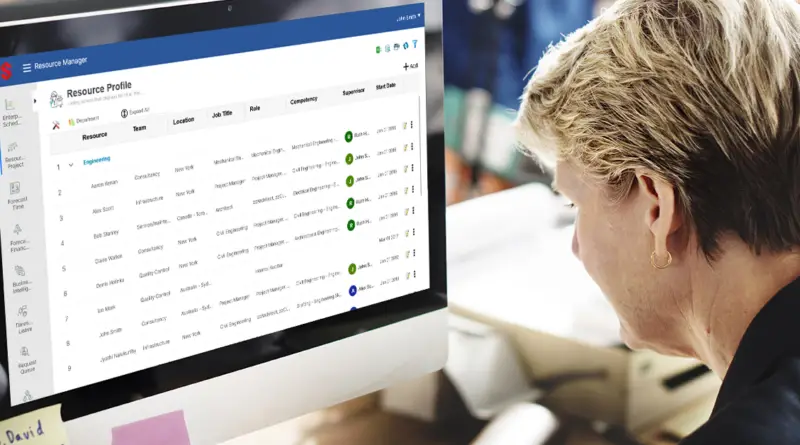6 Effective Ways to Retain Your Construction Workers
“According to statistics, the construction industry has been impacted by the highest employee turnover rates for three consecutive years, with 65% (in 2019), 63.3% (in 2020), and 56.9% (in 2021)”
The above stats show that a high turnover rate continues to be one of the biggest challenges in the construction industry. Some common reasons for this include an aging workforce, mediocre compensation packages, a lack of new graduates, etc.
Losing a highly skilled worker (or, even worse, multiple workers in one go) can be distressing for a construction company as it can derail a project for months and even affect the organization’s bottom line.
However, there is no one-size-fits-all approach to retaining construction firms’ employees, as every company faces different workforce-related challenges. Yet, there are a few strategies that have proven to be effective in addressing high employee turnover rates.
This blog discusses the best strategies to retain on-site workers and how SAVIOM‘s resource management software can help combat this challenge.
But before that, let’s understand.
1. Why is it essential to retain construction employees?
“According to a recent survey, 91% of construction firms face difficulty in finding and hiring suitable workers, which is driving up costs and even causing delays to start new projects.”
Considering the survey, it has become evident that workforce shortages have aggravated in construction firms. Therefore, retaining and optimizing their current talent pool is vital to ensure the timely completion of high-quality projects. Moreover, it saves companies significant costs for hiring and training new employees.
Besides, construction workers with crucial industrial knowledge and experience in their field are valuable company assets. Their expertise enables them to bring quick solutions to common obstacles, resulting in faster turnaround time and increased productivity. Hence, retaining proficient on-site staff benefits firms with better problem-solving and increased efficiency.
Now that we know why it is essential to retain construction employees, let’s look at ways to help you achieve this.
2. 6 effective ways to retain construction staff
To overcome the challenge of high employee churn, managers should focus on adopting strategies that make workers stay with construction companies. Here are some of the effective ways –
2.1. Provide flexible work schedules
With an onsite location-based job, interdependent team roles, and rigid deadlines, the approaches to improve working practices in the construction industry have become limited. However, by bringing flexible work such as compressed workweeks and alternative schedules, construction firms can improve work-life balance.
In addition, construction firms can also opt for a flex-day approach. For example, shifts can be set up, keeping on-site workers’ personal preferences into account alongside the need to deliver business outputs. This way, flexible work arrangements will address concerns around the well-being of workers and retain top talent.
2.2. Promote fair workplace practices
According to the DOL Fair Labor Standard Act, construction workers have a right to fair labor practices. In addition, the Act has defined minimum wage and overtime remuneration for youth workers, elderly workers, and immigrants. To promote reasonable practices, construction companies must have a system that keeps track of resource utilization levels and helps in the accurate calculation of wages.
Moreover, laborers often deal with various risks and hazards due to the nature of the work. Therefore, construction companies must implement on-site safety, heavy equipment training, and stringent supervision to alleviate fatalities. By following ethical standards and promoting fair work practices, construction companies can enhance employee satisfaction and ensure high retention.
2.3. Avoid unconscious distance bias
Distance bias in the construction industry refers to the tendency of unintentionally favoring employees working at office premises over the ones deployed on-site. Such proximity-based discrimination can harm the engagement and productivity of on-site workers and lead to unplanned attrition.
Distance bias can be avoided by boosting communication and involving the on-site team in decision-making. For example, with the help of collaboration tools, project managers can easily communicate project-related updates and discuss challenges with the team. As a result, eliminating distance bias can improve employee engagement and boost retention.
2.4. Monitor & track resource utilization levels
Resource overloading is prevalent in the construction industry, often leading to burnout and unplanned attrition. Therefore, monitoring and tracking resource utilization is critical to ensure that labor is utilized optimally. In addition, organizations can avoid overutilization by implementing resource leveling and smoothing techniques.
Resource leveling involves adjusting project start and finish dates to balance the demand for resources with the available supply. In contrast, resource smoothing can be leveraged to optimize resource schedules by redistributing the workload without altering the project timeline. This results in enhanced productivity, optimal utilization, and reduced turnover.
2.5. Empower workers to choose projects of their interest
There are many ways construction companies can build an employee-friendly culture, including letting employees choose projects or tasks of their interests. It gives workers more control of their work and fosters a greater sense of responsibility. Moreover, this approach provides resources with the opportunity to gain new experience or upgrade their proficiencies, thereby preventing work monotony and disengagement.
For example, the in-house architect has prior experience helping clients with interior design. By allowing the employee to handle both architectural and interior design work, the construction firm can build their secondary skills and boost professional development. This will improve employee engagement and reduce their chances of leaving the organization.
2.6. Reward & recognize on-site staff regularly
Recognizing employees’ achievements and hard work is one of the best ways to acknowledge their contributions to organizational goals. Moreover, employees are more inclined to work for companies that reward their dedication with tangible actions. As a result, it improves workers’ motivation and loyalty.
Hence, compensating for good work boosts workforce morale and improves productivity. This can translate into better individual and organizational performance and positively contribute to retention.
Now that we have gone through the ways to retain construction workers let’s see how resource management software can aid in this scenario.
3. How can resource management software help?
Here is how next-gen resource management can help in retaining on-site construction workers.
The tool’s 360-degree visibility and advanced filters provide construction firms with a complete overview of workforce details such as skills, competencies, availability, and other attributes. This enables managers to design and implement flexible resource schedules.
Advanced forecasting and capacity planning features help construction supervisors identify and course-correct shortages of workers well in advance. With real-time reports such as forecast vs. actual utilization reports, managers can implement appropriate techniques to optimize workforce utilization. It also helps in avoiding unplanned attrition due to burnout.
The people-on-the-bench and project vacancy report helps predict when resources will hit the bench, enabling managers to bring forward the start date of the pipeline project or conduct training programs to keep workers engaged.
Lastly, managers can publish open positions for various projects with the open seat feature. It allows construction employees to apply for vacancies based on their interests, and managers can assign the best-fit resource to the task.
All in all, with the help of this revolutionary ERM tool, construction companies can effectively manage their resources and take appropriate measures to retain them.
4. Wrapping up
Hiring and training new construction workers is expensive and time-consuming, leading to project delays and budget overruns. However, the strategies mentioned above, when paired with the right resource management software, will help you retain your workforce and boost overall productivity.




